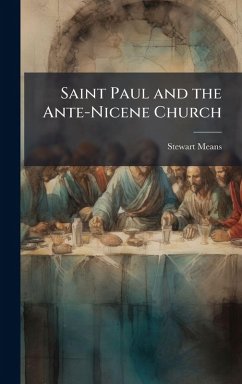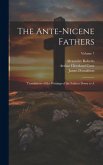"Saint Paul and the Ante-Nicene Church: An Unwritten Chapter of Church History" explores the crucial, yet often overlooked, connection between the Apostle Paul's teachings and the development of early Christian thought in the period before the Council of Nicaea. Stewart Means meticulously examines the writings of the Ante-Nicene Fathers, revealing the profound influence of Paul's epistles on their theological formulations. This study sheds light on the continuity of Pauline doctrine within the nascent Church and illuminates the historical context in which early Christian theology took shape. By drawing direct comparisons between Paul's letters and the works of early Church leaders, Means uncovers an unwritten chapter of Church history. This book is essential reading for anyone interested in the historical roots of Christian doctrine and the enduring legacy of Saint Paul. This work has been selected by scholars as being culturally important, and is part of the knowledge base of civilization as we know it. This work was reproduced from the original artifact, and remains as true to the original work as possible. Therefore, you will see the original copyright references, library stamps (as most of these works have been housed in our most important libraries around the world), and other notations in the work. This work is in the public domain in the United States of America, and possibly other nations. Within the United States, you may freely copy and distribute this work, as no entity (individual or corporate) has a copyright on the body of the work. As a reproduction of a historical artifact, this work may contain missing or blurred pages, poor pictures, errant marks, etc. Scholars believe, and we concur, that this work is important enough to be preserved, reproduced, and made generally available to the public. We appreciate your support of the preservation process, and thank you for being an important part of keeping this knowledge alive and relevant.
Bitte wählen Sie Ihr Anliegen aus.
Rechnungen
Retourenschein anfordern
Bestellstatus
Storno








